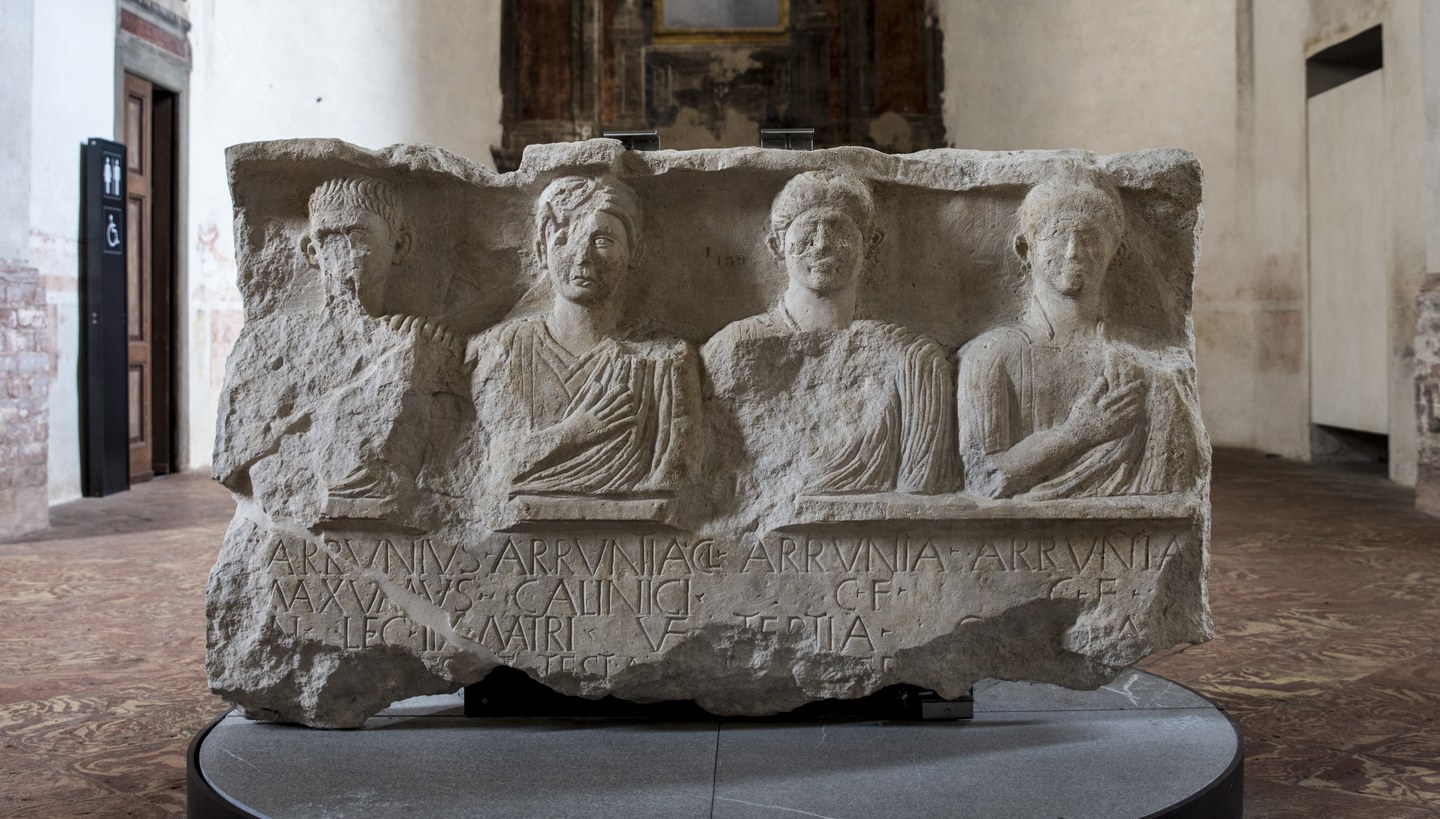
Like in all the other Roman towns, also in Cremona the burials were placed out of the walls, along the main roads; in our case, they were placed along the roads to Bergamo, Brescia, Verona and Mantua (Postumia road).
Unfortunately, the necropolis were excavated in a non-systemic way, without any documentation, and all the tombs do not present their original context; they were also found nine sepulchral stones, with portraits, eschatological symbols and inscriptions.
The most ancient necropolis, dating back to the end of the 1st centuryb.C., resepcted the funerary rite of incineration, a tradition which lasted till the 2nd century a.C. The deaths were buried with grave goods which were considered necessary to make “more comfortable” the afterlife: vases in clay, glass or bronze, ornaments, oil lamps and coins, the offering for Caronte.
More or less at the end of the 2nd Century a.C. it started to disseminate the rite of inhumation, which became the most important rite in the 4th century. The unique examples of late ancient burials in Cremona are a series of tombs in cases made of bricks, found without the grave goods in the apse of San Lorenzo Church, and a burial in lead, containing a cup in engraved glass connected to the Renana production of the half of the 4th century a.C., found in the Cathedral’s area. This finding represents the first demonstration of the use of burying the deaths in the town, around the churches.
